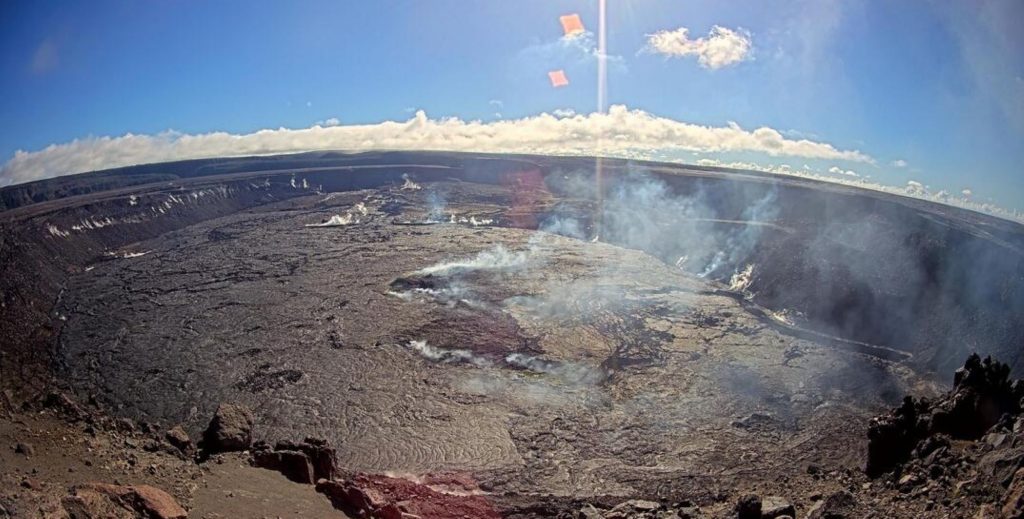Activity at Kīlauea summit decreases dramatically, suggesting recent intrusive event coming to an end

Earthquake and ground deformation rates beneath the southern part of the summit caldera of the Big Island’s Kīlauea volcano and extending southwest to the Koaʻe fault zone have decreased dramatically during the past several days.
According to the Hawaiian Volcano Observatory in its daily Kīlauea update as of about 8:30 a.m. Oct. 15, that suggests the intrusive event that began last week is coming to an end.
There’s been a dramatic decrease in earthquakes, from a peak of more than 250 per day last week to only 23 recorded during the past 24 hours. Summit tiltmeters also recorded a change in tilt magnitude and direction during the past several days, away from the seismically active area, thus signaling ground deformation associated with the intrusive event has ceased.
These observations suggest new magma supply to the intrusion below the surface south of Kīlauea’s summit caldera has slowed greatly or stopped.
The Uēkahuna summit tiltmeter north of the caldera recorded very slight deflation during the past 24 hours, while the Sand Hill tiltmeter just south of the caldera is showing a flat tilt trend.
Other monitoring data streams, including webcam views, do not show any significant changes.
However, inflation at the summit remains high and at nearly the level seen just before the last eruption on Sept. 10, which lasted less than a week. Seismicity and ground deformation rates are likely to begin increasing again in the near future.
Sulfur dioxide emission rates remain low and were measured at a rate of about 100 tonnes per day Oct. 6.
No unusual activity has been noted along the volcano’s East or Southwest rift zones.
The Hawaiian Volcano Observatory continues to closely monitor Kīlauea.
For discussion about Kīlauea hazards, click here. For Hawaiʻi Volcanoes National Park visitor information, click here.
A live webcam at Halemaʻumaʻu crater can also be viewed on YouTube.






